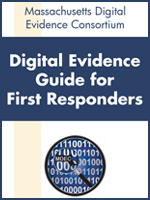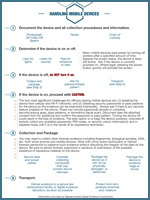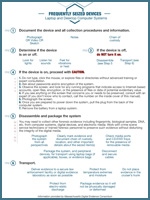Digital Evidence

Digital evidence is any information or data of value to an investigation that is stored on, received by, or transmitted by an electronic device. Text messages, emails, pictures and videos, and internet searches are some of the most common types of digital evidence.
Digital Trail
Most criminals now leave a digital footprint; a suspect’s IP address, posting on a Social Media platform or using their mobile device for everyday use in place of a traditional computer and camera. This is information could reveal:
- Intent,
- Location and time of crime,
- Relationship with victim(s), and
- Relationship with other suspect(s)
On Scene
 As the first responding officer, the collection and preservation of digital evidence begins with you.
As the first responding officer, the collection and preservation of digital evidence begins with you.
Once the scene has been secured and legal authority to seize the evidence has been confirmed, devices can be collected. First responders must be cautious when handling digital devices in addition to normal evidence collection procedures the preventing the exposure to extreme temperatures, static electricity and moisture are a must.
The Frequently seized devices are from Massachusetts Digital Evidence Consortium: ” Digital Evidence Guide for First Responders”
Frequently seized devices – Smartphones and other mobile devices
 This document focuses on the proper collection and preservation of smartphones and other mobile devices. The information found in this document comes from the Digital Evidence Guide for First Responders developed by the Massachusetts Digital Evidence Consortium.
This document focuses on the proper collection and preservation of smartphones and other mobile devices. The information found in this document comes from the Digital Evidence Guide for First Responders developed by the Massachusetts Digital Evidence Consortium.
Frequently seized devices – Laptop and Desktop Computer Systems
 This document focuses on the proper collection and preservation of laptop and desktop computer systems. The information found in this document comes from the Digital Evidence Guide for First Responders developed by the Massachusetts Digital Evidence Consortium.
This document focuses on the proper collection and preservation of laptop and desktop computer systems. The information found in this document comes from the Digital Evidence Guide for First Responders developed by the Massachusetts Digital Evidence Consortium.






